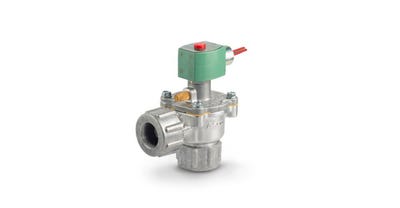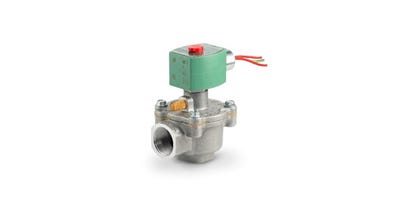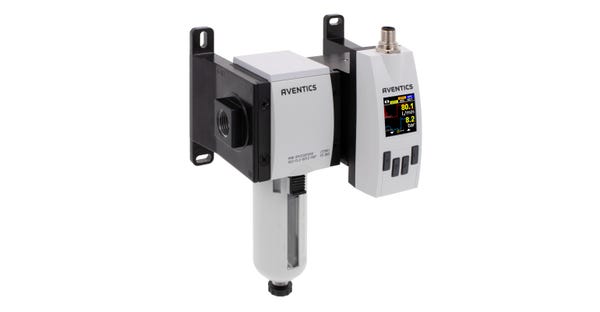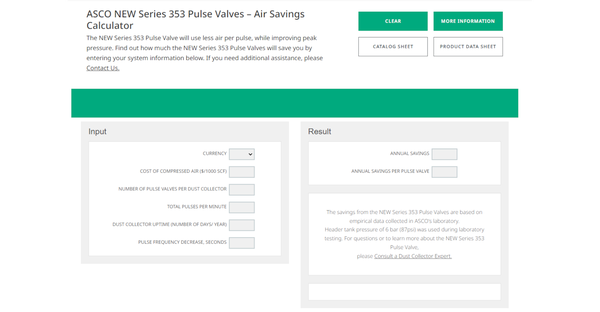Advanced valve technologies can reliably reduce compressed air consumption, improve energy efficiency, and extend filter life while optimizing dust collector performance.
February 28, 2023
Olivia Demkowicz, product marketing manager, Emerson
Sustainability is a high priority in every industry, and many companies are developing decarbonization strategies to reduce carbon emissions and minimize their environmental impact. For companies to achieve success, it is critical that they identify key sustainability opportunities across their plant floors. In many process facilities, one critical area of opportunity is dust collector systems.
As dust collectors remove powders and particulates from the environment, their filter bags can cake with dust. This can restrict clean airflow and reduce dust collector efficiency. To clean filters, many dust collectors have pulse valves that periodically send jets of compressed air through filters to break up and remove dust cakes. Producing this compressed air requires energy, so it is important that pulse valves operate efficiently and effectively to optimize energy use and reduce emissions.


There are high-performance pulse valves that can significantly improve the sustainability of dust collector systems, as well as intelligent technologies that can further optimize it. This comprehensive suite of solutions can reliably reduce compressed air use, improve system efficiency, and extend bag and filter life.
Extending Filter Life
One area of mitigating excess waste and additional costs is by maximizing the filter life to reduce the number of replacements needed. Many filter systems have valves that are designed to operate at an optimal peak pressure and specific valve response time to clean filters. If the pressure is too high, it can tear filters. If the valve response time is too slow or pressure is too low, dust can remain on the filters and clog them.
The latest pulse valves feature a one-piece, two-way diaphragm that can provide optimal peak pressure and faster valve response time than conventional pulse valves. By clearing filters of dust and preserving filter integrity, this kind of pulse valve can help extend filter life while also improving the cleaning efficiency of the overall dust collector system.
While the construction of a conventional pulse valve forces airflow to travel over a wall, restricting it, a valve with a one-piece diaphragm allows airflow to travel under the diaphragm, restricting the flow much less and increasing air speed. A valve with a one-piece diaphragm can also minimize contamination risk and reduce maintenance time.
In addition to pulse valves with optimal peak pressure and fast valve response time, sensing and monitoring technology can also help promote sustainable cleaning practices within the dust collector system to prolong filter lifetime. Sensors integrated into the dust collector system can provide accurate and reliable particle, differential pressure, and temperature readings in real time. These data streams can be aggregated by a controller and translated by software into insights and real-time filtration system health diagnostics. Using these insights and diagnostics, operators can identify and address clogged filters and other issues earlier to prevent early filter failure.
Reducing Compressed Air Use
Compressed air is one of the most consumable resources used in dust collection systems. In addition to extending filter life, pulse valves that feature fast opening and closing technology can also reduce compressed air use. Valves that have a slow response time stay open longer, which releases more compressed air. As compressed air generation is one of the more expensive processes in a facility, reducing use can also result in significant cost savings.

When developing sustainability strategies, it’s important to include a compressed air consumption analysis. There are formulas and charts available online, plus some technology providers have easy-to-use air savings calculators that can simplify evaluation.
In addition to fast valve response time, only pulsing valves when filters need it can help reduce compressed air consumption. Most pulse valve frequency is usually determined by a preset timed interval or based on differential pressure. This means that valves can pulse, releasing compressed air, even when it isn’t necessary. In contrast, an intelligent control system can use information from sensors to optimize valve pulse frequency, which in turn optimizes compressed air consumption. This can reduce energy use and related emissions.

Another way to reduce compressed air consumption in dust collection systems is by monitoring overall airflow itself. Up to one third of the compressed air a facility uses is typically lost to leaks. Most facilities check for compressed air leaks on a preset maintenance schedule, which means that leaks can go undetected — releasing compressed air and wasting energy — for long periods of time before they’re addressed.
In comparison, there are intelligent sensors that can continuously monitor airflow in pneumatic systems and detect leaks early so personnel can address them before much air is lost. Addressing leaks promptly can also significantly reduce maintenance time and the related costs compared to the labor-intensive process of checking every tube in the system on a schedule.
These smart sensors can easily integrate within existing systems and be used as stand-alone devices, or they can connect to new or existing controllers and visualization software for advanced analytics.
Improving Efficiency
By optimizing compressed air use and keeping filters clean, pulse valves with high peak pressure and fast valve response time significantly improve the overall energy efficiency of a dust collection system. While using only the compressed air needed for processes can significantly improve energy efficiency, keeping filters clear can improve the cleaning efficiency of the dust collection system and help ensure particles are effectively removed from the environment.
To further optimize the efficiency of dust collection systems, supervisory control and data acquisition (SCADA) software can provide advanced system analytics and a holistic view of dust collection system health and performance. This level of information can help improve sustainability decision-making as well as overall equipment effectiveness (OEE).
By extracting data streams from dust collector systems, the interface displays aggregated information and diagnostics so operators can gain visibility into operations and learn more about them. Operators can see the status of every element in the system, including each compartment, bag, row, and solenoid valve, in real time. With this data, trends such as energy consumption, can be identified and maintenance can be better planned. If an issue arises, the software can send appropriate personnel detailed diagnostic alerts via text message or email.
This clear picture of what’s happening at the device level in a dust collection system allows facilities to shift from reactive maintenance to predictive maintenance approaches. By taking care of potential issues before they can grow, facilities can optimize energy use and improve system efficiency, reducing both emissions and downtime.
Advanced software like this can be accessed remotely and puts the right information into the hands of the right expert at the right time. For example, chief sustainability officers and other stakeholders can access the dashboard to track sustainability progress and generate relevant reports on emissions, energy usage, and more for government agencies.
Collecting Dust — Not Emissions
Facilities with dust collection systems that feature high-performance pulse valves, as well as sensing and control technology, are equipped to significantly reduce compressed air use, improve system efficiency, and extend bag and filter life. To achieve this level of optimization, it’s important that companies partner with an experienced technology provider that offers a comprehensive portfolio of scalable solutions, from rugged, high-performance pulse valves to hardware and software that can work with a company’s existing equipment and networks. A provider like this can help organizations begin to digitally transform their dust collector systems or leap ahead on their journey.
Companies can reliably reach net-zero targets and improve the sustainability of their operations with careful planning and the right technology. Every machine and system across the floor is an opportunity to save energy and reduce emissions, including dust collector systems. By integrating valves that optimize energy use and smart sensors, controllers and software solutions that can provide device-level visibility, companies are better positioned than ever to maximize the potential of their dust collector systems while minimizing their environmental impact.
Olivia Demkowicz is product marketing manager, Emerson. For more information, visit www.emerson.com.
You May Also Like


